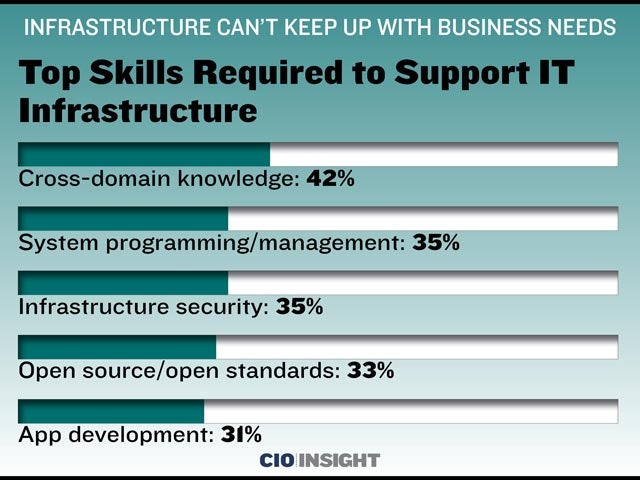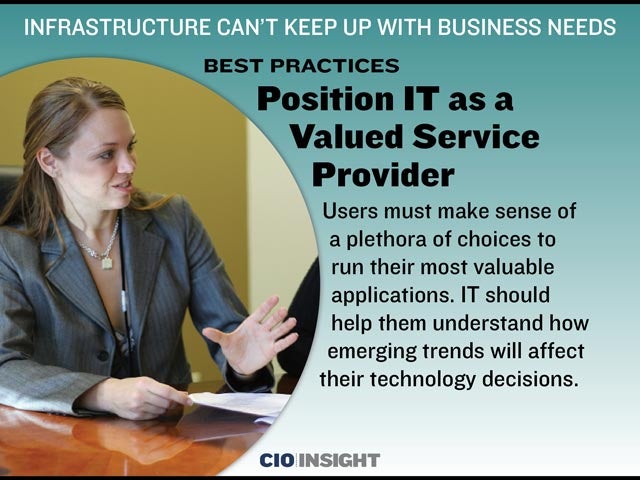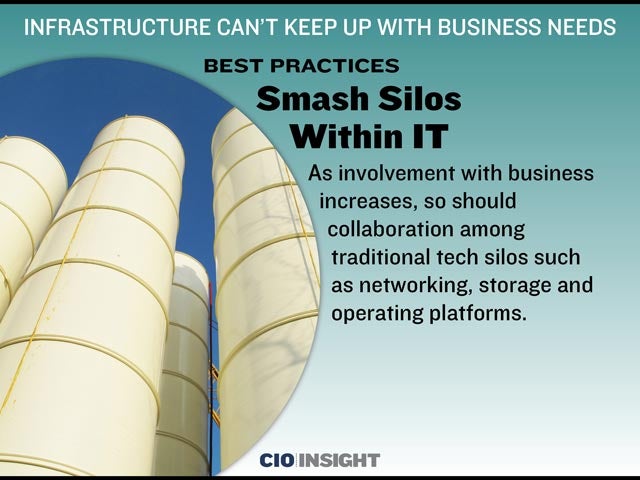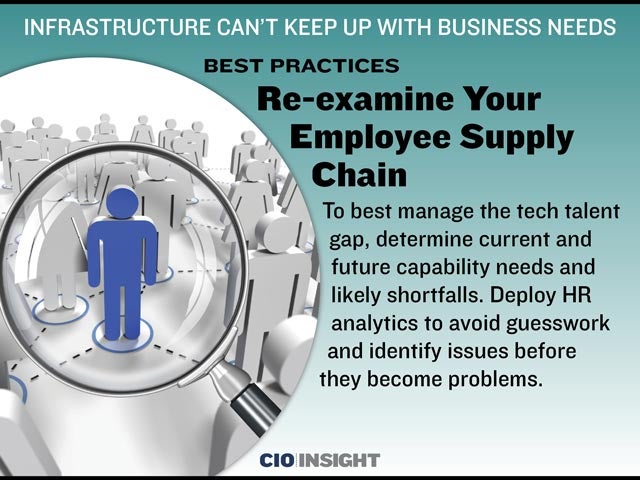
Infrastructure Can’t Keep Up With Business Needs
 Business Asset
Business Asset
More than seven out of 10 CIOs and other senior tech execs surveyed feel that their company recognizes that IT infrastructure plays a primary role in enabling competitive advantage or optimizing revenue and profit.
 Flying Blind
Flying Blind
Just 22% said their organization has a well-defined enterprise IT infrastructure strategy and road map.
 Business Challenges of IT Infrastructure
Business Challenges of IT Infrastructure
Keeping up with increasing pace of business requirements: 48%, Managing upgrade cycles: 42%, Providing the needed storage capabilities: 36%, Delivering enough bandwidth: 31%, Maintaining service levels within IT budgets: 30%
 Collective Effort
Collective Effort
43% of senior IT leaders surveyed said non-IT execs at their organization have gotten involved in decisions affecting end-user devices, while two out of five said the same about security, cloud computing and IT architecture.
 Short-Handed
Short-Handed
Only 13% of them said they’re successful in developing and maintaining the skills and capabilities needed to meet changing IT infrastructure requirements.
 Top Skills Required to Support IT Infrastructure
Top Skills Required to Support IT Infrastructure
Cross-domain knowledge: 42%, System programming/management: 35%, Infrastructure security: 35%, Open source/open standards: 33%, App development: 31%
 Incomplete Assessment
Incomplete Assessment
Only 23% of senior IT execs in the survey said their organization is successful at collecting, analyzing and documenting performance measures.
 Best Practices: Position IT as a Valued Service Provider
Best Practices: Position IT as a Valued Service Provider
Users must make sense of a plethora of choices to run their most valuable applications. IT should help them understand how emerging trends will affect their technology decisions.
 Best Practices: Smash Silos Within IT
Best Practices: Smash Silos Within IT
As involvement with business increases, so should collaboration among traditional tech silos such as networking, storage and operating platforms.
 Best Practices: Re-examine Your Employee Supply Chain
Best Practices: Re-examine Your Employee Supply Chain
To best manage the tech talent gap, determine current and future capability needs and likely shortfalls. Deploy HR analytics to avoid guesswork and identify issues before they become problems.